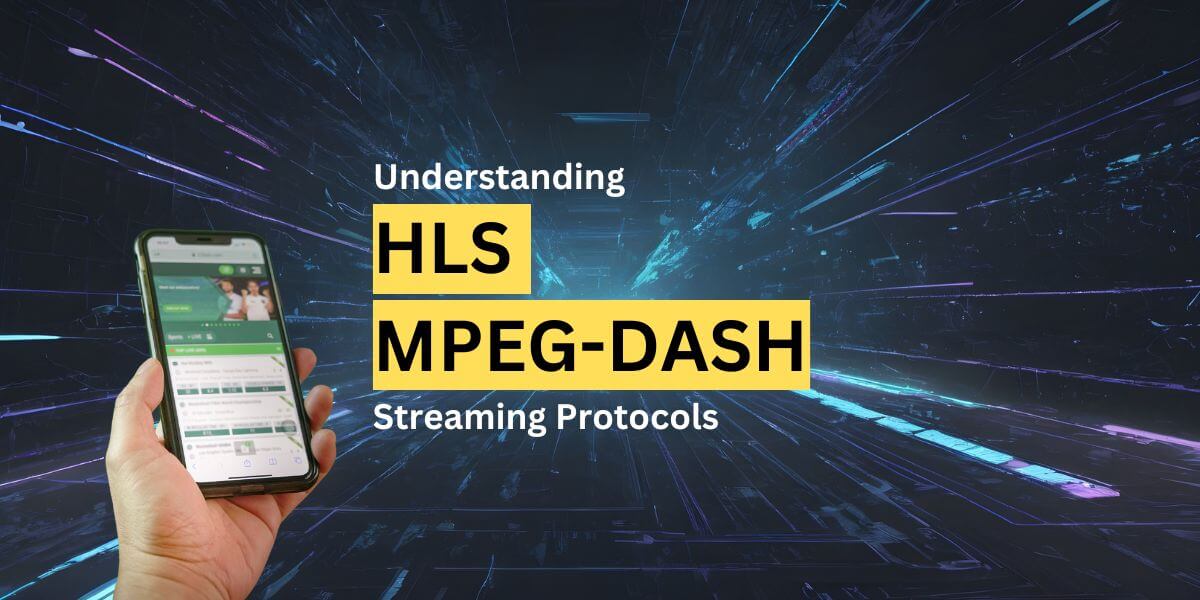The Art of Perfecting Video Encoding for Satellite Broadcasts: A Step-by-Step Guide
Video encoding for satellite broadcasts involves the process of converting a video signal into a format that can be transmitted over satellite networks. This process is essential for ensuring that the video signal is efficiently compressed and transmitted to the satellite for broadcast to viewers. Video encoding involves the use of various codecs and compression techniques to reduce the size of the video file while maintaining high-quality playback. The encoded video is then transmitted to the satellite for broadcast to viewers.
One of the key considerations in video encoding for satellite broadcasts is the need to balance video quality with bandwidth efficiency. This requires careful selection of video codecs and compression settings to ensure that the video signal is compressed to a manageable size without sacrificing visual quality. Additionally, video encoding for satellite broadcasts must take into account the limitations of satellite transmission, such as bandwidth constraints and potential signal degradation. Understanding these factors is crucial for optimizing video encoding for satellite broadcasts and ensuring high-quality viewing experiences for viewers.
Choosing the Right Video Codec for Satellite Broadcasts
When it comes to choosing the right video codec for satellite broadcasts, there are several factors to consider. One of the most important considerations is the level of compression and quality that can be achieved with a particular codec. Different codecs offer varying levels of compression and quality, so it’s important to select a codec that strikes the right balance between file size and visual fidelity. Additionally, compatibility with satellite broadcast standards and receiver devices is another crucial factor in choosing the right video codec for satellite broadcasts.
Another consideration when choosing a video codec for satellite broadcasts is the level of complexity and computational resources required for encoding and decoding. Some codecs may require more processing power and resources, which can impact the efficiency and cost-effectiveness of satellite broadcast operations. It’s important to choose a codec that can be efficiently implemented within the constraints of satellite broadcast systems while still delivering high-quality video playback. Ultimately, selecting the right video codec for satellite broadcasts requires careful consideration of compression efficiency, visual quality, compatibility, and resource requirements.
Optimizing Bitrate and Resolution for Satellite Broadcasts
Optimizing bitrate and resolution for satellite broadcasts is essential for delivering high-quality video content while efficiently utilizing available bandwidth. Bitrate refers to the amount of data transmitted per unit of time, while resolution refers to the number of pixels in a video frame. Balancing bitrate and resolution is crucial for ensuring that video content is delivered in a visually appealing and efficient manner over satellite networks.
When optimizing bitrate and resolution for satellite broadcasts, it’s important to consider the limitations of satellite transmission, such as available bandwidth and potential signal degradation. This requires careful selection of bitrate settings to ensure that video content is compressed to a manageable size without sacrificing visual quality. Additionally, optimizing resolution involves selecting the appropriate display format for satellite broadcasts, taking into account factors such as screen size and viewer preferences. By carefully optimizing bitrate and resolution, satellite broadcasters can deliver high-quality video content while maximizing bandwidth efficiency.
Another consideration when optimizing bitrate and resolution for satellite broadcasts is the need to support a variety of receiver devices and display resolutions. This requires flexibility in bitrate and resolution settings to accommodate different viewing environments and device capabilities. Additionally, optimizing bitrate and resolution involves considering the potential impact on storage and processing requirements for both encoding and decoding operations. By carefully balancing these factors, satellite broadcasters can optimize bitrate and resolution to deliver high-quality video content while efficiently utilizing available bandwidth.
Ensuring Compatibility with Satellite Broadcast Standards
Ensuring compatibility with satellite broadcast standards is essential for delivering video content that can be reliably transmitted and received by satellite networks. Satellite broadcast standards define the technical specifications and requirements for encoding, transmission, and reception of video content over satellite networks. By adhering to these standards, broadcasters can ensure that their video content is compatible with satellite networks and receiver devices, enabling reliable transmission and playback.
One of the key considerations in ensuring compatibility with satellite broadcast standards is selecting video codecs and compression techniques that are widely supported by satellite networks and receiver devices. This requires careful consideration of codec compatibility and adherence to industry standards to ensure that encoded video content can be efficiently transmitted and decoded by satellite networks. Additionally, ensuring compatibility with satellite broadcast standards involves compliance with technical specifications for signal modulation, error correction, and other transmission parameters.
Another important aspect of ensuring compatibility with satellite broadcast standards is testing and validation of encoded video content to ensure compliance with industry specifications. This may involve conducting thorough testing of encoded video streams to verify compatibility with satellite networks and receiver devices, as well as adherence to technical specifications for signal modulation and error correction. By ensuring compatibility with satellite broadcast standards, broadcasters can deliver video content that can be reliably transmitted and received by satellite networks, ensuring high-quality viewing experiences for viewers.
Implementing Error Correction and Forward Error Correction
Implementing error correction and forward error correction is essential for ensuring reliable transmission of video content over satellite networks. Error correction techniques are used to detect and correct errors that may occur during transmission, ensuring that the integrity of the video signal is maintained throughout the broadcast process. Forward error correction techniques are used to proactively correct errors before they occur, enhancing the reliability of video transmission over satellite networks.
One of the key considerations in implementing error correction and forward error correction for satellite broadcasts is selecting appropriate techniques that can effectively mitigate potential errors during transmission. This requires careful consideration of error correction algorithms and parameters to ensure that errors can be reliably detected and corrected without impacting the visual quality of the video signal. Additionally, implementing forward error correction techniques involves proactively adding redundant data to encoded video streams to enhance error resilience during transmission.
Another important aspect of implementing error correction and forward error correction for satellite broadcasts is optimizing these techniques to balance error resilience with bandwidth efficiency. This requires careful selection of error correction parameters to ensure that potential errors can be effectively mitigated without significantly increasing bandwidth requirements. Additionally, implementing forward error correction techniques involves carefully managing the amount of redundant data added to encoded video streams to maximize error resilience while minimizing impact on bandwidth utilization.
Testing and Quality Assurance for Satellite Broadcasts
Testing and quality assurance are essential components of ensuring high-quality video encoding for satellite broadcasts. Thorough testing of encoded video content is necessary to verify compatibility with satellite networks and receiver devices, as well as adherence to industry standards and technical specifications. Quality assurance processes are used to validate the visual quality and integrity of encoded video content, ensuring that viewers receive high-quality viewing experiences.
One of the key considerations in testing and quality assurance for satellite broadcasts is conducting comprehensive validation of encoded video streams to ensure compliance with industry standards and technical specifications. This may involve testing encoded video content on a variety of receiver devices to verify compatibility with different display resolutions and viewing environments. Additionally, quality assurance processes may involve subjective evaluation of visual quality to ensure that encoded video content meets established quality benchmarks.
Another important aspect of testing and quality assurance for satellite broadcasts is conducting thorough validation of error correction and forward error correction techniques to ensure reliable transmission of video content over satellite networks. This may involve simulating potential transmission errors to verify the effectiveness of error correction algorithms in mitigating errors during broadcast. Additionally, quality assurance processes may involve monitoring the integrity of encoded video streams throughout the broadcast process to ensure that potential errors are effectively detected and corrected.
Fine-Tuning Video Encoding for Satellite Broadcasts
Fine-tuning video encoding for satellite broadcasts involves optimizing encoding parameters to achieve the best possible balance between visual quality, bandwidth efficiency, and compatibility with satellite broadcast standards. This requires careful adjustment of codec settings, bitrate, resolution, error correction parameters, and other encoding parameters to deliver high-quality video content while efficiently utilizing available bandwidth.
One of the key considerations in fine-tuning video encoding for satellite broadcasts is balancing visual quality with bandwidth efficiency by carefully adjusting codec settings and compression parameters. This may involve selecting appropriate compression levels to achieve optimal file size reduction without sacrificing visual fidelity. Additionally, fine-tuning bitrate settings involves carefully managing data transmission rates to ensure efficient utilization of available bandwidth while maintaining high-quality playback.
Another important aspect of fine-tuning video encoding for satellite broadcasts is optimizing error correction parameters to enhance reliability of video transmission over satellite networks. This may involve adjusting error correction algorithms and parameters to effectively mitigate potential errors during transmission without significantly impacting bandwidth utilization. Additionally, fine-tuning forward error correction techniques involves carefully managing redundant data added to encoded video streams to maximize error resilience while minimizing impact on bandwidth requirements.
In conclusion, understanding video encoding for satellite broadcasts involves careful consideration of compression techniques, codec selection, bitrate optimization, resolution settings, compatibility with broadcast standards, error correction implementation, testing and quality assurance processes, as well as fine-tuning encoding parameters. By carefully addressing these considerations, broadcasters can optimize video encoding for satellite broadcasts to deliver high-quality video content while efficiently utilizing available bandwidth and ensuring reliable transmission over satellite networks.






